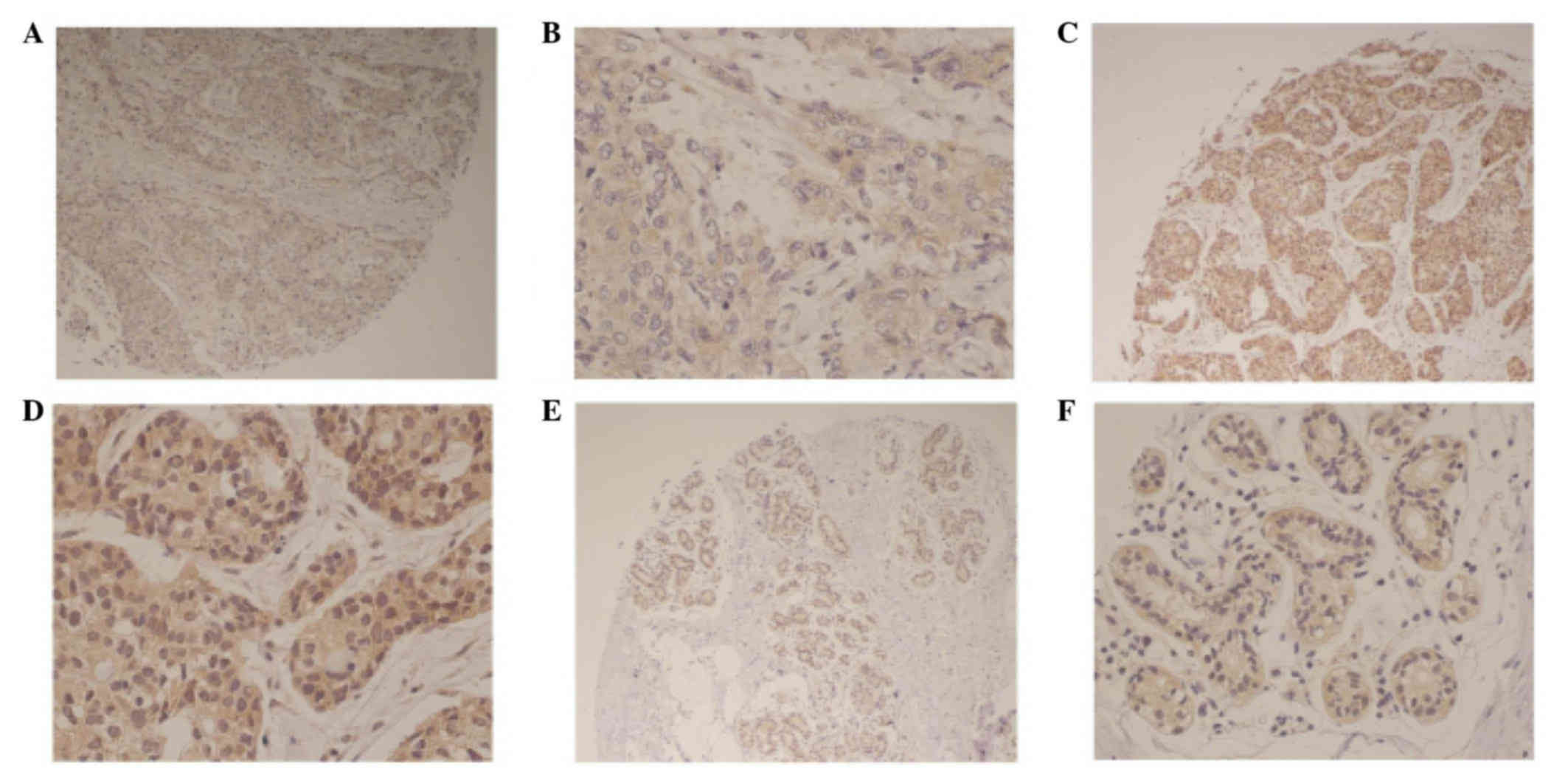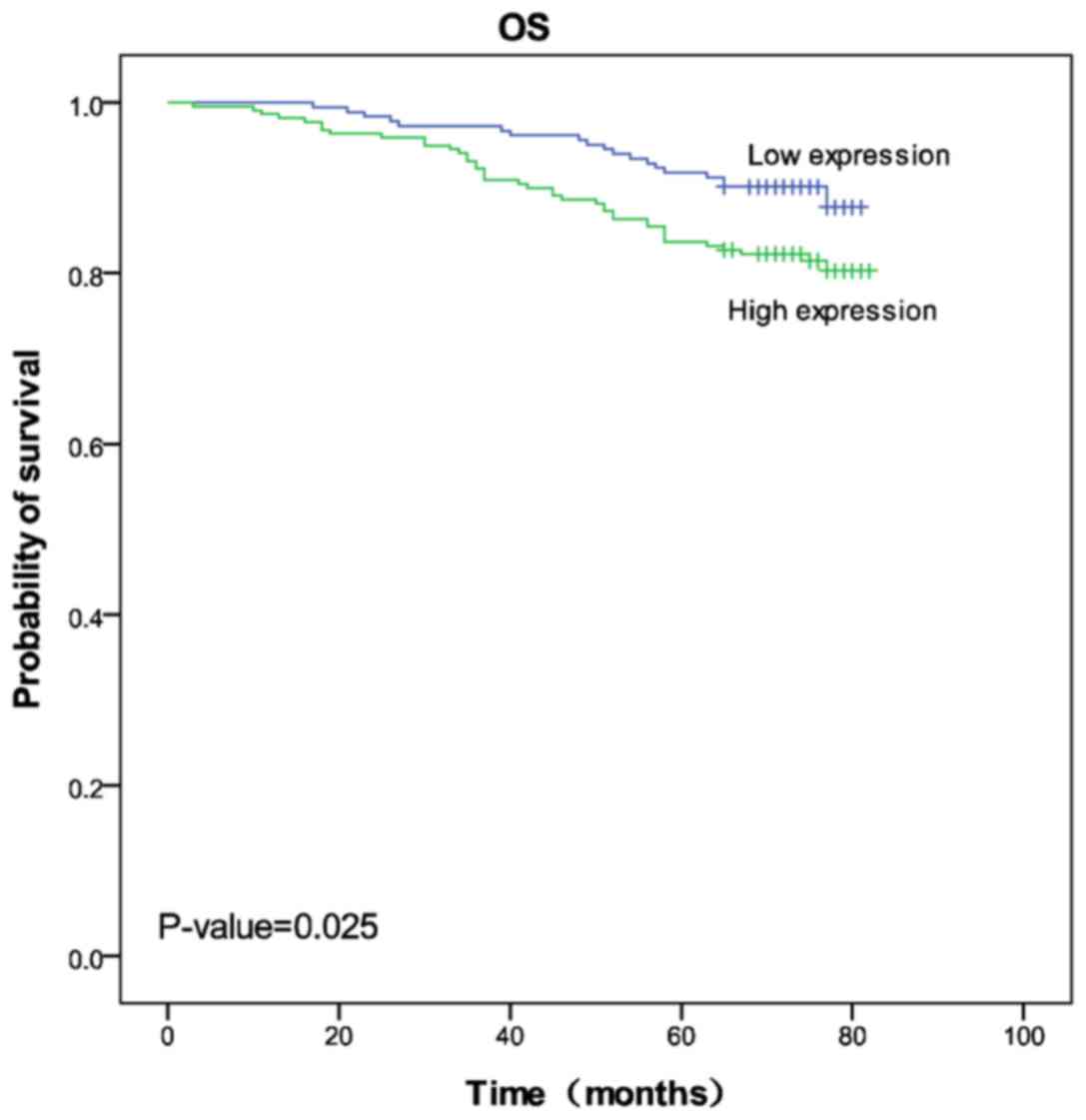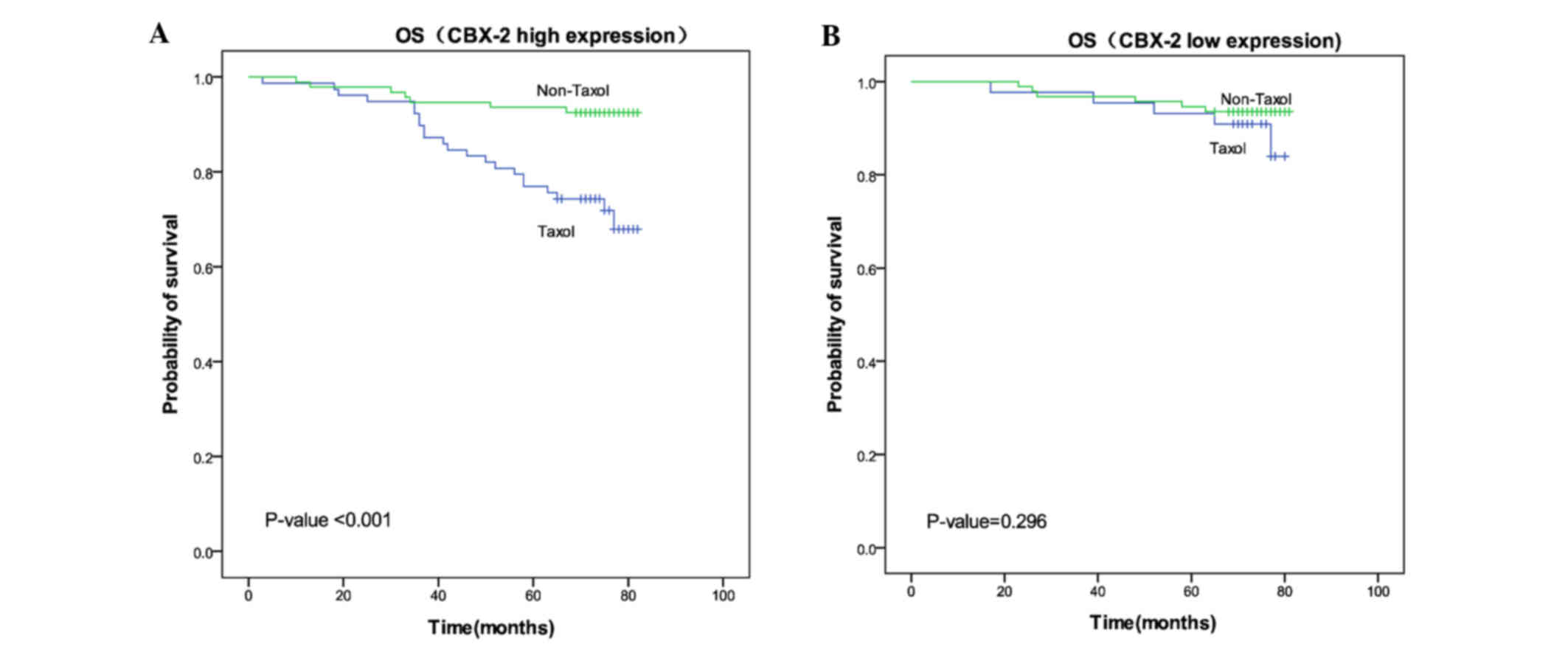|
1
|
Siegel R, Ma J, Zou Z and Jemal A: Cancer
statistics, 2014. CA Cancer J Clin. 64:9–29. 2014. View Article : Google Scholar : PubMed/NCBI
|
|
2
|
DeSantis C, Ma J, Bryan L and Jemal A:
Breast cancer statistics, 2013. CA Cancer J Clin. 64:52–62. 2014.
View Article : Google Scholar : PubMed/NCBI
|
|
3
|
Ali AM, Provenzano E, Bartlett JM, Abraham
J, Driver K, Munro AF, Twelves C, Poole CJ, Hiller L, Dunn JA, et
al: Prognosis of early breast cancer by immunohistochemistry
defined intrinsic sub-types in patients treated with adjuvant
chemotherapy in the NEAT/BR9601 trial. Int J Cancer. 133:1470–1478.
2013. View Article : Google Scholar : PubMed/NCBI
|
|
4
|
Liu R, Lv QL, Yu J, Hu L, Zhang LH, Cheng
Y and Zhou HH: Correlating transcriptional networks with
pathological complete response following neoadjuvant chemotherapy
for breast cancer. Breast Cancer Res Treat. 151:607–618. 2015.
View Article : Google Scholar : PubMed/NCBI
|
|
5
|
Krishnan P, Ghosh S, Wang B, Li D,
Narasimhan A, Berendt R, Graham K, Mackey JR, Kovalchuk O and
Damaraju S: Next generation sequencing profiling identifies
miR-574-3p and miR-660-5p as potential novel prognostic markers for
breast cancer. BMC Genomics. 16:7352015. View Article : Google Scholar : PubMed/NCBI
|
|
6
|
Boccardo F, Rubagotti A, Nuzzo PV,
Argellati F, Savarino G, Romano P, Damonte G, Rocco M and Profumo
A: Matrix-assisted laser desorption/ionisation (MALDI) TOF analysis
identifies serum angiotensin II concentrations as a strong
predictor of all-cause and breast cancer (BCa)-specific mortality
following breast surgery. Int J Cancer. 137:2394–2402. 2015.
View Article : Google Scholar : PubMed/NCBI
|
|
7
|
Sparmann A and van Lohuizen M: Polycomb
silencers control cell fate, development and cancer. Nat Rev
Cancer. 6:846–856. 2006. View
Article : Google Scholar : PubMed/NCBI
|
|
8
|
Shao Z, Raible F, Mollaaghababa R, Guyon
JR, Wu CT, Bender W and Kingston RE: Stabilization of chromatin
structure by PRC1, a Polycomb complex. Cell. 98:37–46. 1999.
View Article : Google Scholar : PubMed/NCBI
|
|
9
|
Levine SS, Weiss A, ErdjumentBromage H,
Shao Z, Tempst P and Kingston RE: The core of the polycomb
repressive complex is compositionally and functionally conserved in
flies and humans. Mol Cell Biol. 22:6070–6078. 2002. View Article : Google Scholar : PubMed/NCBI
|
|
10
|
Kuzmichev A, Nishioka K, ErdjumentBromage
H, Tempst P and Reinberg D: Histone methyltransferase activity
associated with a human multiprotein complex containing the
Enhancer of Zeste protein. Genes Dev. 16:2893–2905. 2002.
View Article : Google Scholar : PubMed/NCBI
|
|
11
|
Vincenz C and Kerppola TK: Different
polycomb group CBX family proteins associate with distinct regions
of chromatin using nonhomologous protein sequences. Proc Natl Acad
Sci USA. 105:16572–16577. 2008. View Article : Google Scholar : PubMed/NCBI
|
|
12
|
Shinjo K, Yamashita Y, Yamamoto E,
Akatsuka S, Uno N, Kamiya A, Niimi K, Sakaguchi Y, Nagasaka T,
Takahashi T, et al: Expression of chromobox homolog 7 (CBX7) is
associated with poor prognosis in ovarian clear cell adenocarcinoma
via TRAIL-induced apoptotic pathway regulation. Int J Cancer.
135:308–318. 2014. View Article : Google Scholar : PubMed/NCBI
|
|
13
|
Scott CL, Gil J, Hernando E,
TeruyaFeldstein J, Narita M, Martínez D, Visakorpi T, Mu D,
Cordon-Cardo C, Peters G, et al: Role of the chromobox protein CBX7
in lymphomagenesis. Proc Natl Acad Sci USA. 104:5389–5394. 2007.
View Article : Google Scholar : PubMed/NCBI
|
|
14
|
Zhang XW, Zhang L, Qin W, Yao XH, Zheng
LZ, Liu X, Li J and Guo WJ: Oncogenic role of the chromobox protein
CBX7 in gastric cancer. J Exp Clin Cancer Res. 29:1142010.
View Article : Google Scholar : PubMed/NCBI
|
|
15
|
Li J, Xu Y, Long XD, Wang W, Jiao HK, Mei
Z, Yin QQ, Ma LN, Zhou AW, Wang LS, et al: Cbx4 governs HIF-1α to
potentiate angiogenesis of hepatocellular carcinoma by its SUMO E3
ligase activity. Cancer Cell. 25:118–131. 2014. View Article : Google Scholar : PubMed/NCBI
|
|
16
|
Klauke K, Radulović V, Broekhuis M,
Weersing E, Zwart E, Olthof S, Ritsema M, Bruggeman S, Wu X, Helin
K, et al: Polycomb Cbx family members mediate the balance between
haematopoietic stem cell self-renewal and differentiation. Nat Cell
Biol. 15:353–362. 2013. View
Article : Google Scholar : PubMed/NCBI
|
|
17
|
Parris TZ, Danielsson A, Nemes S, Kovács
A, Delle U, Fallenius G, Möllerström E, Karlsson P and Helou K:
Clinical implications of gene dosage and gene expression patterns
in diploid breast carcinoma. Clin Cancer Res. 16:3860–3874. 2010.
View Article : Google Scholar : PubMed/NCBI
|
|
18
|
Lakhani SR, Ellis IO, Schnitt SJ, Tan PH
and van de Vijver MJ: WHO Classification of Tumours of the Breast.
4th. IARC, WHO; 2012
|
|
19
|
Nishimukai A, Yagi T, Yanai A, Miyagawa Y,
Enomoto Y, Murase K, Imamura M, Takatsuka Y, Sakita I, Hatada T and
Miyoshi Y: High Ki-67 expression and low progesterone receptor
expression could independently lead to a worse prognosis for
postmenopausal patients with estrogen receptor-positive and
HER2-negative breast cancer. Clin Breast Cancer. 15:204–211. 2015.
View Article : Google Scholar : PubMed/NCBI
|
|
20
|
Wolff AC, Hammond ME, Hicks DG, Dowsett M,
McShane LM, Allison KH, Allred DC, Bartlett JM, Bilous M,
Fitzgibbons P, et al: American Society of Clinical Oncology;
College of American Pathologists: Recommendations for human
epidermal growth factor receptor 2 testing in breast cancer:
American Society of Clinical Oncology/College of American
Pathologists clinical practice guideline update. Arch Pathol Lab
Med. 138:241–256. 2014. View Article : Google Scholar : PubMed/NCBI
|
|
21
|
Tubbs RR, Hicks DG, Cook J, DownsKelly E,
Pettay J, Hartke MB, Hood L, Neelon R, Myles J, Budd GT, et al:
Fluorescence in situ hybridization (FISH) as primary methodology
for the assessment of HER2 Status in adenocarcinoma of the breast:
A single institution experience. Diagn Mol Pathol. 16:207–210.
2007. View Article : Google Scholar : PubMed/NCBI
|
|
22
|
Falato C, Lorent J, Tani E, Karlsson E,
Wright PK, Bergh J and Foukakis T: Ki67 measured in metastatic
tissue and prognosis in patients with advanced breast cancer.
Breast Cancer Res Treat. 147:407–414. 2014. View Article : Google Scholar : PubMed/NCBI
|
|
23
|
Millar EK, Graham PH, McNeil CM, Browne L,
O'Toole SA, Boulghourjian A, Kearsley JH, Papadatos G, Delaney G,
Fox C, et al: Prediction of outcome of early ER+ breast cancer is
improved using a biomarker panel, which includes Ki-67 and p53. Br
J Cancer. 105:272–280. 2011. View Article : Google Scholar : PubMed/NCBI
|
|
24
|
Yamashita H, Toyama T, Nishio M, Ando Y,
Hamaguchi M, Zhang Z, Kobayashi S, Fujii Y and Iwase H: p53 protein
accumulation predicts resistance to endocrine therapy and decreased
post-relapse survival in metastatic breast cancer. Breast Cancer
Res. 8:R482006. View
Article : Google Scholar : PubMed/NCBI
|
|
25
|
Remmele W and Stegner HE: Recommendation
for uniform definition of an immunoreactive score (IRS) for
immunohistochemical estrogen receptor detection (ER-ICA) in breast
cancer tissue. Pathologe. 8:138–140. 1987.(In German). PubMed/NCBI
|
|
26
|
Remmele W and Schicketanz KH:
Immunohistochemical determination of estrogen and progesterone
receptor content in human breast cancer. Computer-assisted image
analysis (QIC score) vs subjective grading (IRS). Pathol Res Pract.
189:862–866. 1993. View Article : Google Scholar : PubMed/NCBI
|
|
27
|
Clermont PL, Sun L, Crea F, Thu KL, Zhang
A, Parolia A, Lam WL and Helgason CD: Genotranscriptomic
meta-analysis of the Polycomb gene CBX2 in human cancers: Initial
evidence of an oncogenic role. Br J Cancer. 111:1663–1672. 2014.
View Article : Google Scholar : PubMed/NCBI
|
|
28
|
Parris TZ, Aziz L, Kovács A, Hajizadeh S,
Nemes S, Semaan M, Chen CY, Karlsson P and Helou K: Clinical
relevance of breast cancer-related genes as potential biomarkers
for oral squamous cell carcinoma. BMC Cancer. 14:3242014.
View Article : Google Scholar : PubMed/NCBI
|
|
29
|
Satijn DP, Olson DJ, van der Vlag J, Hamer
KM, Lambrechts C, Masselink H, Gunster MJ, Sewalt RG, van Driel R
and Otte AP: Interference with the expression of a novel human
polycomb protein, hPc2, results in cellular transformation and
apoptosis. Mol Cell Biol. 17:6076–6086. 1997. View Article : Google Scholar : PubMed/NCBI
|
|
30
|
Jiang Y, Malouf GG, Zhang J, Zheng X, Chen
Y, Thompson EJ, Weinstein JN, Yuan Y, Spano JP, Broaddus R, et al:
Long non-coding RNA profiling links subgroup classification of
endometrioid endometrial carcinomas with trithorax and polycomb
complex aberrations. Oncotarget. 6:39865–39876. 2015.PubMed/NCBI
|
|
31
|
Kerppola TK: Polycomb group complexes-many
combinations, many functions. Trends Cell Biol. 19:692–704. 2009.
View Article : Google Scholar : PubMed/NCBI
|
|
32
|
Di Croce L and Helin K: Transcriptional
regulation by Polycomb group proteins. Nat Struct Mol Biol.
20:1147–1155. 2013. View Article : Google Scholar : PubMed/NCBI
|
|
33
|
Piunti A, Rossi A, Cerutti A, Albert M,
Jammula S, Scelfo A, Cedrone L, Fragola G, Olsson L, Koseki H, et
al: Polycomb proteins control proliferation and transformation
independently of cell cycle checkpoints by regulating DNA
replication. Nat Commun. 5:36492014. View Article : Google Scholar : PubMed/NCBI
|
|
34
|
Zhen CY, Duc HN, Kokotovic M, Phiel CJ and
Ren X: Cbx2 stably associates with mitotic chromosomes via a PRC2-
or PRC1-independent mechanism and is needed for recruiting PRC1
complex to mitotic chromosomes. Mol Biol Cell. 25:3726–3739. 2014.
View Article : Google Scholar : PubMed/NCBI
|
|
35
|
van den Boom V, RozenveldGeugien M,
Bonardi F, Malanga D, van Gosliga D, Heijink AM, Viglietto G,
Morrone G, Fusetti F, Vellenga E and Schuringa JJ: Nonredundant and
locus-specific gene repression functions of PRC1 paralog family
members in human hematopoietic stem/progenitor cells. Blood.
121:2452–2461. 2013. View Article : Google Scholar : PubMed/NCBI
|
|
36
|
van den Boom V, RozenveldGeugien M,
Bonardi F, Malanga D, van Gosliga D, Heijink AM, Viglietto G,
Morrone G, Fusetti F, Vellenga E and Schuringa JJ: Nonredundant and
locus-specific gene repression functions of PRC1 paralog family
members in human hematopoietic stem/progenitor cells. Blood.
121:2452–2561. 2013. View Article : Google Scholar : PubMed/NCBI
|
|
37
|
Weaver BA: How Taxol/paclitaxel kills
cancer cells. Mol Biol Cell. 25:2677–2681. 2014. View Article : Google Scholar : PubMed/NCBI
|
|
38
|
Zelnak AB, Nikolinakos P, Srinivasiah J,
Jonas W, Pippas A, Liu Y, Li X, Torres M and O'Regan RM: Georgia
Center for Oncology Research and Education: High pathologic
complete response in Her2-positive, early-stage breast cancer to a
novel nonanthracycline neoadjuvant chemotherapy. Clin Breast
Cancer. 15:31–36. 2015. View Article : Google Scholar : PubMed/NCBI
|
|
39
|
Kathawala RJ, Sodani K, Chen K, Patel A,
Abuznait AH, Anreddy N, Sun YL, Kaddoumi A, Ashby CR Jr and Chen
ZS: Masitinib antagonizes ATP-binding cassette subfamily C member
10-mediated paclitaxel resistance: A preclinical study. Mol Cancer
Ther. 13:714–723. 2014. View Article : Google Scholar : PubMed/NCBI
|
|
40
|
Peng X, Cao P, He D, Han S, Zhou J, Tan G,
Li W, Yu F, Yu J, Li Z and Cao K: MiR-634 sensitizes nasopharyngeal
carcinoma cells to paclitaxel and inhibits cell growth both in
vitro and in vivo. Int J Clin Exp Pathol. 7:6784–6791.
2014.PubMed/NCBI
|
|
41
|
Russell P, Hennessy BT, Li J, Carey MS,
Bast RC, Freeman T and Venkitaraman AR: Cyclin G1 regulates the
outcome of taxane-induced mitotic checkpoint arrest. Oncogene.
31:2450–2460. 2012. View Article : Google Scholar : PubMed/NCBI
|
|
42
|
Ruddock-D'Cruz NT, Prashadkumar S, Wilson
KJ, Heffernan C, Cooney MA, French AJ, Jans DA, Verma PJ and
Holland MK: Dynamic changes in localization of Chromobox (Cbx)
family members during the maternal to embryonic transition. Mol
Reprod Dev. 75:477–488. 2008. View Article : Google Scholar : PubMed/NCBI
|
|
43
|
Huynh H: Overexpression of tumour
suppressor retinoblastoma 2 protein (pRb2/p130) in hepatocellular
carcinoma. Carcinogenesis. 25:1485–1494. 2004. View Article : Google Scholar : PubMed/NCBI
|
|
44
|
Reno EM, Haughian JM, Dimitrova IK,
Jackson TA, Shroyer KR and Bradford AP: Analysis of protein kinase
C delta (PKC delta) expression in endometrial tumors. Hum Pathol.
39:21–29. 2008. View Article : Google Scholar : PubMed/NCBI
|













